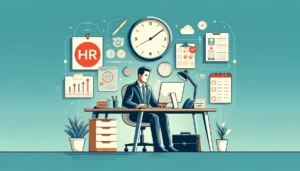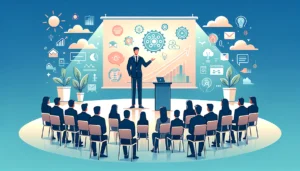A recipe for a future-proof HR tech stack
- 4 Min Read
Leading practices involve creating a collaborative, weighted selection process between IT, business/function leaders to assess these factors annually as needs take shape.
- Author: HRD Connect
- Date published: Feb 27, 2024
- Categories

The HR tech stack has changed drastically over the last 5 years. HRD Connect want to understand what impact this has had on the HR function more broadly, and where HR teams are investing. Please take part in our latest piece of research on this topic here.
HR tech stacks have emerged as one of the top ten priorities for the majority of HR departments, with most asserting that their tech stack underpins the organization’s business objectives and strategies.
The HR tech stack refers to the entire gamut of technologies – software, apps, platforms, and so forth, employed to manage HR and people processes and functions. Today, organizations need to ensure they possess the right technology, which is not only easy to implement but also enhances HR and people processes.
Constructing the right HR tech stack is crucial to the efficiency and productivity of HR functions. It automates tasks, thereby reducing administrative burdens. Furthermore, it aids in making data-driven decisions by centralizing employee data, enhancing accuracy, and accessibility, and thereby assisting in making real-time decisions.
Constructing an Optimal HR Tech Stack
The first stride towards building an HR tech stack should be assessing your company’s needs and resources. Comprehend what you require the technology to do for you and the extent of support you need from the service provider.
Choose the processes you wish to automate or enhance. Identify challenges and areas for improvement so you can select the right solutions that manage those specific needs.
When selecting an HR tech stack, factors to keep in mind include ease of adoption, ease of integration, and ease of scalability. User adoption of HR technology still lags behind the adoption goals. Ensure the tech you choose is user-friendly and offers a superior user experience.
When your HR technologies and apps are not integrated, data exists in silos, and the employee experience is disjointed. Your HR tech stack should be seamless to use from both an employee and HR perspective. Your HR tech stack should not only meet your current business needs but also what it might need in the future as it grows.
Technologies to Include in Your HR Tech Stack
An ideal HR tech stack should consist of HRIS, ATS, performance management software, learning and development software, payroll and benefits software, time and attendance system, employee engagement platform, HR analytics and reporting tools, task management, identity and access management, and communication tools.
- Applicant Tracking System (ATS) – To manage job postings, screen resumes, communicate with candidates efficiently during hiring processes. Popular options include Greenhouse, Lever, Workday.
- HR Information System (HRIS) – To maintain employee records, manage payroll, benefits, time-off, etc. Common platforms are Workday, Oracle HCM, SAP SuccessFactors.
- Learning Management System (LMS) – To facilitate employee training and development through e-learning courses and programs. Cornerstone OnDemand, Saba Cloud, Docebo are often used.
- Performance Management System – For goal setting, regular check-ins, providing feedback, reviewing employees. Options include Lattice, Reflektive, Betterworks.
- HR Analytics/Metrics Tracking – To gather insights and measure HR initiatives. Could be part of an HRIS or specialized tools like Visier, tango.
- Video Interview Software – To schedule and conduct remote video interviews. HireVue, SparkHire, Modern Hire.
- Surveying Tools – To regularly gather employee feedback and measure engagement. SurveyMonkey Apply, Qualtrics, Voxco.
The main reasons HR teams adopt these technologies are to automate administrative workflows, facilitate remote work, centralize employee data, build talent pipelines, and generally promote digital transformation initiatives for more strategic HR support.
The Future of HR Tech Stack
As the HR tech stack continues to evolve, it will offer even more capabilities.
For instance, advanced analytics and artificial intelligence could provide HR teams with deeper insights into employee performance and engagement, helping them make more informed decisions. Similarly, automation could further streamline HR processes, freeing up HR professionals to focus on strategic tasks.
By carefully selecting the right technologies and ensuring they are seamlessly integrated, companies can support their HR functions, drive their business goals and strategies, and ultimately, achieve greater success.
Therefore, it is crucial for HR teams to pay attention to their tech stack, continually assess its effectiveness, and make necessary adjustments to stay ahead in the rapidly evolving business environment.









